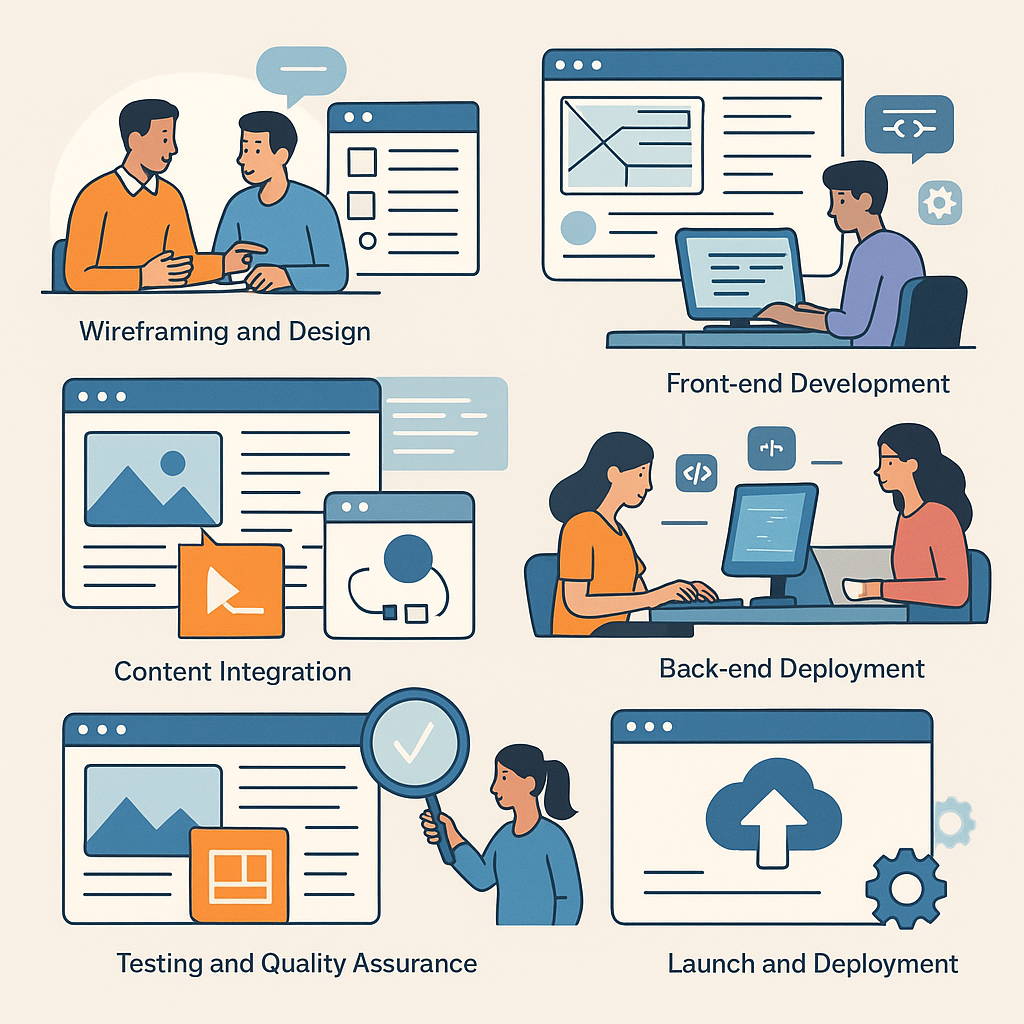
Step-by-Step Guide to Professional Website Development
In today’s digital world, your website is often the first interaction potential customers have with your business. A well-developed website builds trust, showcases your brand, and helps convert visitors into customers. Whether you're building a business site, an online store, or a portfolio, following a structured website development process ensures better results and long-term success.
Here’s a step-by-step guide to help you understand how professional websites are developed:
1. Planning and Requirement Gathering
Every successful project starts with a clear plan. This stage involves understanding the website's purpose, defining your target audience, setting goals, and outlining key features. For example, do you want an online booking system, a blog, or an eCommerce store? Gathering this information early helps developers align the technical structure with your business needs.
2. Wireframing and Design
After planning, the next step is to create a wireframe—a simple webpage layout showing where text, images, buttons, and other elements will go. Once the wireframe is approved, designers move on to creating high-fidelity mockups. A great design is clean, visually appealing, responsive, and consistent with your brand identity.
3. Front-End Development
This is where the design turns into code. Front-end developers use technologies like HTML, CSS, JavaScript, and frameworks like React or Vue.js to build the visual part of your website—the user interface. A professional front-end ensures your website looks and works great across all devices (desktop, tablet, mobile).
4. Back-End Development
The back-end is the engine that powers your site. Developers create databases, server connections, and write backend logic using languages like Node.js, Python, PHP, or .NET. If your site requires user logins, contact forms, or payment integration, the back-end ensures everything functions securely and efficiently.
5. Content Integration
Once the website structure is ready, it’s time to add your content—text, images, videos, and other media. Make sure your content is SEO-optimized and easy to read. Quality content helps with user engagement and improves your search engine rankings.
6. Testing and Quality Assurance
Before launching, your website goes through extensive testing. This includes functionality testing, browser compatibility, mobile responsiveness, and security checks. Bugs and errors are fixed to ensure a smooth user experience.
7. Launch and Deployment
Once everything looks perfect and works smoothly, the website is deployed to a live server. This usually involves using a hosting provider and connecting the domain name. Developers also configure settings like SSL certificates, email forwarding, and analytics tracking.
8. Maintenance and Updates
A website is never really “done.” Regular maintenance is essential for security, speed, and performance. This includes updating plugins, fixing bugs, backing up data, and adding new features based on user feedback.
Final Thoughts
Website development is a multi-step process that requires careful planning, technical skills, and creative design. When done right, it creates a powerful tool to grow your business, attract new customers, and enhance your brand’s credibility. If you’re ready to build a website that truly works for your business, consider working with a professional web development team.
✅ Ready to get started? Contact The BlueGem to bring your vision to life.
— Gemma (10 May 2025)